The Singer 99K is a vintage mechanical sewing machine introduced in the 1950s, known for its durability and versatility. It was available in both hand crank and electric versions, offering flexibility for different users. Designed for home sewists and small-scale manufacturers, the 99K model is celebrated for its robust construction and reliable performance. Its adjustable stitch length and reverse stitching capabilities make it a favorite among sewing enthusiasts and collectors alike.
1.1 Overview of the Singer 99K Model
The Singer 99K is a mechanical sewing machine from the 1950s, part of Singer’s Class 99 series. It is known for its simplicity, durability, and versatility, making it suitable for both home sewists and small manufacturers. The machine offers straight stitch and reverse stitching capabilities, with adjustable stitch length. Its robust construction and reliable performance have made it a popular choice among sewing enthusiasts and collectors.
1.2 Historical Background and Popularity
The Singer 99K was introduced in the 1950s as part of Singer’s Class 99 series, quickly gaining popularity for its durability and reliability. Known for its robust construction, it became a favorite among home sewists and small manufacturers. Its versatility and user-friendly design made it a trusted choice, contributing to its enduring popularity among sewing enthusiasts and collectors today.
1.3 Key Features and Benefits
The Singer 99K offers adjustable stitch length and reverse stitching, enhancing creativity and control. Its top-loading bobbin ensures easy threading, while compatibility with Singer needles and oil guarantees optimal performance. The robust motor supports both AC and DC operation, making it versatile for various sewing tasks. These features combine to provide a reliable, durable, and user-friendly sewing experience.

Unboxing and Initial Setup
The Singer 99K sewing machine comes with essential accessories like bobbins, needles, and a manual. Unbox carefully, ensuring all parts are included. Begin by assembling the machine according to the instructions, ensuring proper alignment of components. Apply Singer oil to lubricate moving parts before first use. This ensures smooth operation and longevity.
2.1 What’s Included in the Box
The Singer 99K sewing machine box includes the main unit, a set of bobbins, Singer needles, a seam guide, and a comprehensive instruction manual. Additional accessories like presser feet and an oil bottle are often provided to ensure optimal performance. Ensure all items are accounted for before setup to guarantee a smooth sewing experience.
2.2 Assembly and Preparation for Use
The Singer 99K requires minimal assembly. Attach the motor securely, ensuring it is tightly fastened. Apply a few drops of Singer oil to the machine’s moving parts for smooth operation. Follow the threading guide carefully to ensure proper thread flow. Once assembled, test the machine with scrap fabric to ensure it is ready for use.
2.3 Safety Precautions and Warnings
Always unplug the machine when not in use or during maintenance. Keep loose clothing and long hair tied back to avoid accidents. Use only genuine Singer needles and follow threading instructions carefully. Ensure the machine is placed on a stable surface. Regularly oil the machine to prevent overheating. Avoid sewing over fingers or near flammable materials.
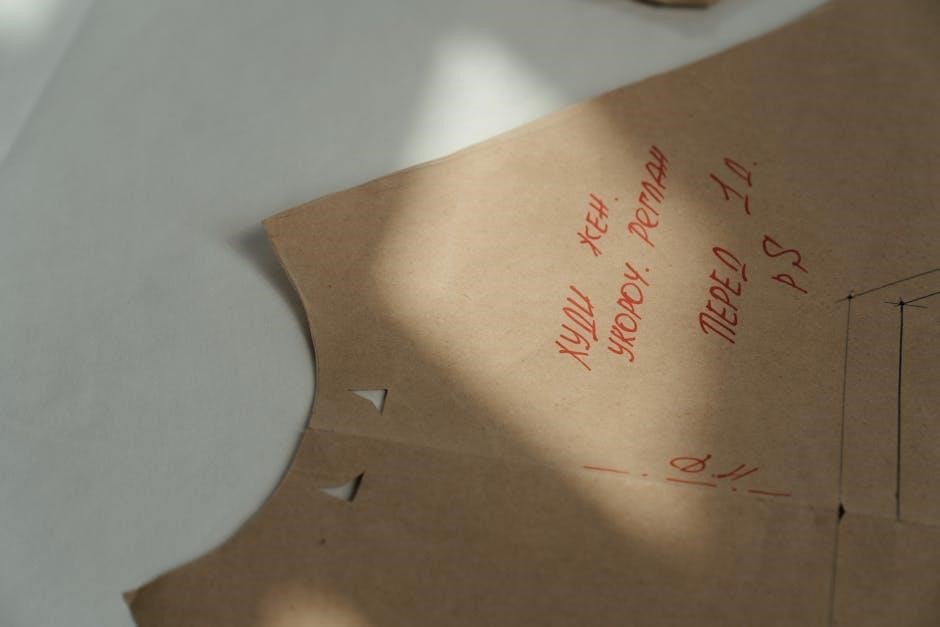
Understanding the Machine Components
The Singer 99K features a robust design with key components like the bobbin, spool pin, tension discs, and presser feet, ensuring precise stitching and versatility.
3.1 Identification of Major Parts
The Singer 99K sewing machine includes essential components like the balance wheel, spool pin, tension discs, bobbin case, presser foot, and stitch regulator. These parts work together to ensure smooth operation, allowing users to control thread flow, fabric movement, and stitch formation effectively. Understanding each part’s function is crucial for optimal performance and maintenance.
3.2 Explanation of Controls and Dials
The Singer 99K features a stitch length dial, tension dials, and a reverse stitch lever. The stitch length dial adjusts the size of stitches, while the tension dials regulate thread tightness. The reverse stitch lever allows for backstitching, ensuring secure seam starts and ends. These controls provide precise adjustment options, enabling users to customize stitching for various fabrics and sewing tasks efficiently.
3.3 Accessories and Attachments Overview
The Singer 99K offers a variety of accessories, including presser feet for zigzag, zipper, and buttonhole sewing, enabling tasks like hemming, quilting, and handling thick fabrics. These attachments are compatible with other Singer models, ensuring versatility for various sewing projects. They are readily available online or at sewing shops, enhancing your sewing experience with durable construction and easy installation.
Threading and Bobbin Setup
Threading the Singer 99K involves placing the thread on the spool pin and guiding it through the machine’s tension discs and take-up lever. Install the bobbin correctly in the bobbin case, ensuring proper thread tension. Always use genuine Singer needles and oil for optimal performance.
4.1 Step-by-Step Threading Guide
To thread the Singer 99K, place the thread on the spool pin. Guide the thread through the tension discs, then down through the take-up lever. Pass it through the needle bar groove and insert into the needle. For the bobbin, wind thread around the bobbin winder, cut the end, and draw it through the bobbin case. Proper tension ensures smooth stitching.
4.2 Bobbin Installation and Thread Tension
To install the bobbin, wind thread around it and secure the end. Place the bobbin in the case, ensuring the thread unwinds counterclockwise. Insert the bobbin into the machine, pulling the thread gently to set tension. Adjust the bobbin tension by turning the small screw on the case until the thread resistance feels even, ensuring balanced stitching and preventing tangles or loose fabric.
4.3 Common Threading Mistakes to Avoid
Avoid improper thread routing by following the machine’s guide path. Ensure the bobbin thread unwinds counterclockwise and the main thread is seated correctly in the tension discs. Over-tightening the bobbin case can cause thread breakage, while under-tensioning leads to loose stitches. Always use the correct needle size and type for your fabric to prevent skipped stitches or damage.
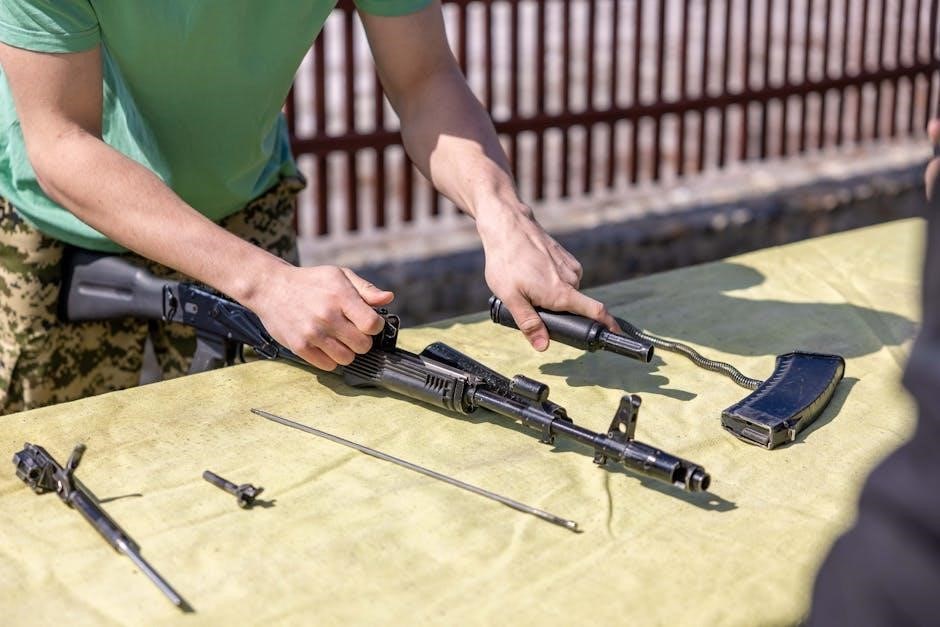
Basic Sewing Operations
The Singer 99K excels in straight stitching and backstitching, essential for secure seams. Begin by guiding fabric smoothly under the presser foot, using the foot pedal for control. Always maintain even fabric tension and use the reverse stitch lever for reinforcing seam beginnings and endings.
5.1 Starting Your First Stitch
To begin, place the fabric under the presser foot, aligning the edge with the guide. Gently lower the needle by turning the handwheel or pressing the foot pedal. Ensure the thread is taut but not tight. Start with a straight stitch, using the foot pedal to maintain steady speed. For secure seams, engage the reverse stitch lever at the beginning and end of your stitching.
5.2 Straight Stitch and Backstitch Techniques
The Singer 99K excels at straight stitching, ideal for basic seams. To begin, ensure the stitch length and width are set appropriately. For a backstitch, engage the reverse lever to reinforce seam beginnings and ends. Maintain steady fabric tension and use the foot pedal gently for consistent stitching. This ensures strong, professional-looking seams on various fabrics.
5.3 Sewing Forward and Reverse
The Singer 99K allows seamless switching between forward and reverse stitching. Engage the reverse lever to sew backward, reinforcing seams at the beginning and end. For forward sewing, disengage the lever and maintain steady fabric movement. Use the foot pedal to control speed, ensuring even stitches. This feature is ideal for securing fabric edges and creating durable finishes.

Tips for Beginners
For beginners, start with simple projects, use recommended needles and threads, and practice on scrap fabric to master stitches and tension. Regular cleaning and oiling ensure smooth operation.
6.1 Choosing the Right Fabric
Choosing the right fabric is essential for optimal performance with the Singer 99K. Start with lightweight fabrics like cotton or linen for smooth stitching. Avoid heavy or thick materials that may cause tension issues. Always pre-wash and dry fabrics before sewing to ensure proper fit and texture. Practice on scrap fabric to refine your skills and achieve consistent results.
6.2 Selecting Appropriate Thread and Needles
For the Singer 99K, use high-quality threads and needles suitable for your fabric type. Cotton or polyester threads work well for most projects, while silk or wool threads are ideal for delicate fabrics. Choose needles based on fabric thickness—sharp for lightweight fabrics, heavy-duty for thicker materials. Always use Singer-branded needles for compatibility and optimal performance. Test on scrap fabric first.
6.3 Practicing on Scrap Fabric
Always practice stitching on scrap fabric before working on your final project. This helps ensure proper tension, stitch length, and thread compatibility. Start with simple straight lines, then experiment with backstitching and reverse sewing. Scrap fabric allows you to test settings and techniques without risking damage to your actual sewing materials. It’s an essential step for confident and accurate sewing.
Maintenance and Care
Regularly clean the machine, oil moving parts, and check for dust buildup. Use Singer oil for lubrication and ensure proper storage to maintain optimal performance and longevity.
7.1 Cleaning the Machine
Regular cleaning is essential for maintaining the Singer 99K. Use a soft, dry cloth to wipe down the exterior, paying attention to the chrome parts. Clean the bobbin case and feed dogs to remove lint and debris. Avoid harsh chemicals, as they may damage the finish. Proper cleaning ensures smooth operation and longevity of the machine.
7.2 Oiling and Lubrication
Regular oiling is vital for the Singer 99K’s smooth operation. Use Singer-specific oil to lubricate moving parts, such as the bobbin area and feed dogs. Apply a few drops to the recommended spots, as indicated in the manual. Avoid over-oiling to prevent lint buildup. Wipe away excess oil with a clean cloth to maintain optimal performance and extend the machine’s lifespan.
7.3 Storage and Transportation Tips
Store the Singer 99K in a dry, clean environment, away from dust and direct sunlight. Use a protective cover or case to prevent damage. For transportation, ensure the machine is securely packed in a sturdy box or hard case. Clean the machine before storage and avoid stacking heavy items on top of it to maintain its condition and functionality.
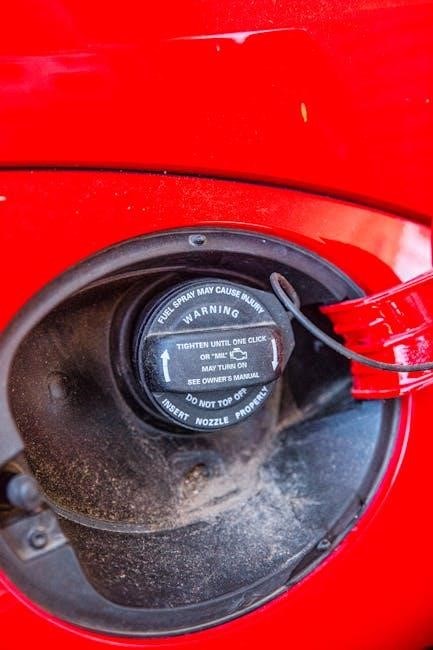
Troubleshooting Common Issues
Identify issues like thread breakage or machine malfunction by checking thread tension, power supply, and lubrication. Ensure proper needle installation and refer to the manual for solutions.
8.1 Machine Not Turning On
If the Singer 99K fails to turn on, first check the power supply and ensure the plug is properly connected. Verify the switch is in the correct position and the motor is securely attached. Consult the manual for electrical specifications and ensure proper lubrication. If issues persist, refer to the troubleshooting guide or contact a professional for assistance.
8.2 Thread Breakage and Tension Problems
Thread breakage and tension issues on the Singer 99K often result from incorrect threading, improper bobbin installation, or using the wrong needle size. Ensure the thread follows the correct path through the guides and tension discs. Adjust the tension dial as needed, and always use Singer-recommended needles and threads. Regularly clean and oil the machine to maintain smooth operation.
8.3 Noise or Vibration Issues
Noise or vibration issues with the Singer 99K often arise from improper assembly, lack of lubrication, or misaligned parts. Ensure the machine is placed on a stable surface and properly balanced. Regularly clean and oil the internal mechanisms to reduce friction. Check for loose screws or worn-out components, and refer to the manual for guidance on maintaining smooth operation.
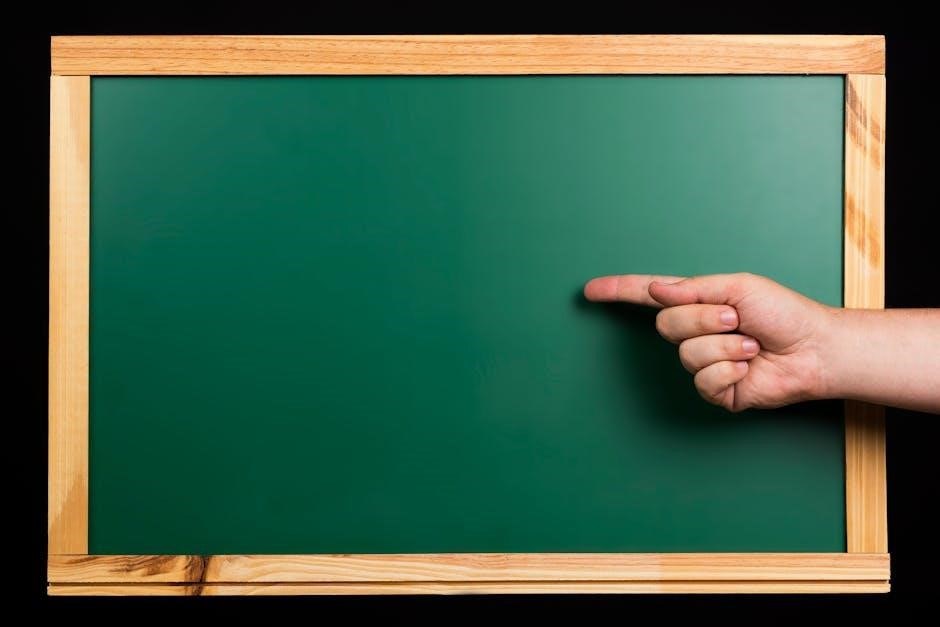
Attachments and Accessories
The Singer 99K offers an array of attachments, including zipper, buttonhole, and blind hem feet, enhancing versatility. Optional accessories expand functionality, ensuring compatibility with Singer parts for optimal performance.
9.1 Using Different Presser Feet
The Singer 99K supports various presser feet, such as zipper, buttonhole, and blind hem feet, each designed for specific tasks. These attachments enhance stitching accuracy and versatility. Properly attaching and adjusting presser feet ensures optimal fabric control. Always refer to the manual for compatibility and installation instructions to maximize your sewing experience with specialized techniques.
9.2 Optional Attachments for Specialized Sewing
The Singer 99K can be enhanced with optional attachments like ruffler, gathering, and quilting feet. These specialized tools allow for intricate stitching, such as gathering fabric or creating decorative edges. They expand the machine’s capabilities, enabling advanced techniques like embroidery and heavy-duty sewing. Each attachment is designed to simplify complex tasks, making the 99K versatile for both casual and professional projects.
9.3 Compatibility with Other Singer Accessories
The Singer 99K is compatible with a range of Singer accessories, including presser feet and attachments. These accessories enhance functionality for specialized tasks like quilting or embroidery. Using genuine Singer parts ensures optimal performance and maintains warranty standards. Compatibility with Singer’s extensive accessory lineup makes the 99K adaptable for diverse sewing needs, from home projects to professional applications.

Advanced Sewing Techniques
The Singer 99K supports advanced techniques like sewing curves, multiple fabric layers, and freehand embroidery. Its adjustable stitch length and reverse stitching enable intricate designs and professional finishes.
10.1 Sewing Curves and Circles
Sewing curves and circles on the Singer 99K requires careful fabric handling and consistent stitch length. Use the adjustable stitch length and width to maintain even tension. Guide the fabric smoothly, keeping the edge aligned with the seam guide. For intricate circles, reduce speed and use a shorter stitch length for precise control and professional results.
10.2 Working with Multiple Layers of Fabric
When sewing multiple fabric layers with the Singer 99K, use the walking foot or Teflon foot for smooth guidance. Maintain consistent tension, align edges precisely, and use longer stitches for thicker materials. Sew slowly to ensure accurate layer control and prevent fabric shifting, achieving professional results even with complex projects.
10.3 Freehand Embroidery and Decorative Stitches
The Singer 99K excels at freehand embroidery and decorative stitching, allowing for creative expression. Use the machine’s adjustable stitch length and tension to achieve intricate designs. For best results, employ an embroidery needle, suitable thread, and stabilize fabric with interfacing. Lower the feed dogs for manual control and sew slowly to ensure precise, even stitches for beautiful embroidery patterns.
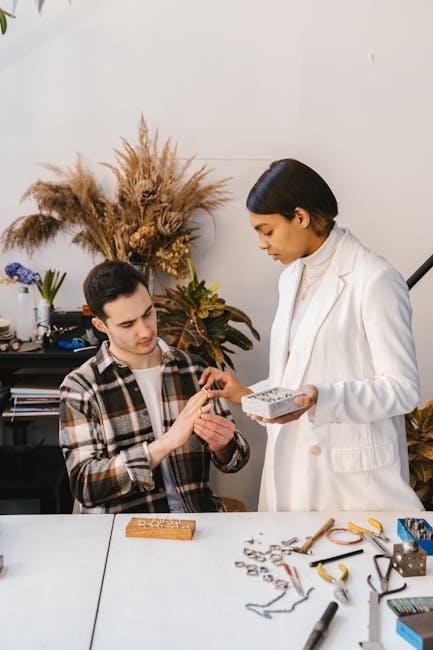
Comparing Singer 99K with Other Models
The Singer 99K stands out for its mechanical simplicity and durability compared to modern computerized machines. Its versatility and robust construction make it a timeless favorite among sewing enthusiasts.
11.1 Singer 99K vs. Singer 66K
The Singer 99K and 66K share similarities in durability but differ in features. The 99K offers adjustable stitch lengths and reverse stitching, making it more versatile for diverse projects. The 66K, while reliable, is more basic, catering to simpler tasks. Both models are popular among collectors, but the 99K is preferred for its enhanced functionality and adaptability to various fabrics.
11.2 Singer 99K vs. Modern Computerized Machines
The Singer 99K, a mechanical model, offers simplicity and durability, ideal for basic sewing tasks. Modern computerized machines feature advanced automation, programmable stitches, and LCD displays. While the 99K lacks these digital features, its reliability and ease of maintenance make it a charming choice for enthusiasts who prefer traditional sewing experiences and value timeless craftsmanship over technological advancements.
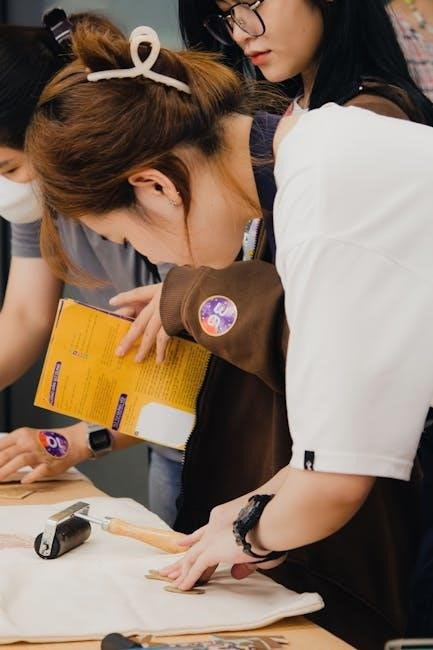
Resources and Support
Official instruction manuals for the Singer 99K are available online, along with community forums and repair services. These resources provide comprehensive guidance and support for optimal machine performance and troubleshooting.
12.1 Official Singer 99K Instruction Manual
The official Singer 99K instruction manual is available for free download in PDF format from various sources, including ManualsDir.com and Singer’s official website. This comprehensive guide covers setup, maintenance, and troubleshooting, ensuring users can fully utilize their machine’s features. It also includes detailed diagrams and step-by-step instructions for optimal performance and care.
12.2 Online Communities and Forums
Online communities and forums provide valuable support for Singer 99K users. Websites like ManualsDir.com and Singer’s official forums offer spaces to share tips, ask questions, and troubleshoot issues. Enthusiasts and experts alike contribute to these platforms, making them a great resource for both beginners and experienced sewists seeking advice or guidance on their Singer 99K sewing machine.
12.3 Repair Services and Parts Availability
The Singer 99K’s repair services and parts availability are well-supported by Singer’s official resources and third-party sellers. Genuine parts can be sourced from Singer’s website or authorized dealers, ensuring authenticity and quality. Additionally, vintage sewing machine specialists and online marketplaces offer compatible parts, making maintenance and repairs accessible for users seeking to keep their 99K in optimal condition.
The Singer 99K remains a timeless, reliable sewing machine, cherished for its durability and versatility. With proper care and use, it continues to inspire sewing enthusiasts and collectors alike, offering endless creative possibilities for generations of sewists.
13.1 Final Tips for Getting the Most Out of Your Singer 99K
Regularly clean and oil your Singer 99K to maintain its performance. Use genuine Singer needles and threads for optimal results. Practice on scrap fabric before working on final projects. Store the machine in a dry place when not in use. Refer to the manual for specific techniques and join sewing communities for inspiration and support.